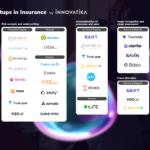
In today’s digital world, mobile apps have become an integral part of our daily lives. They provide us with convenience, entertainment, and essential services. However, it’s crucial to ensure that these apps are accessible and inclusive to all users, including those with disabilities. By designing mobile apps with accessibility in mind, developers can create a more inclusive and user-friendly experience. In this article, we will explore the importance of designing mobile apps for accessibility and share practical tips to achieve inclusivity.
Understanding accessibility in mobile app design
Accessibility in mobile app design refers to the practice of making apps usable and inclusive for people with disabilities. It involves removing barriers that may hinder individuals with visual, hearing, motor, or cognitive impairments from accessing and using the app effectively. By considering the diverse needs of users with disabilities, developers can create interfaces that are perceivable, operable, and understandable to a wider audience. Accessibility design principles encompass various aspects, including visual elements, auditory cues, touch interactions, and cognitive considerations. Ultimately, designing with accessibility in mind ensures that all users can enjoy the benefits and functionalities of a mobile app, promoting inclusivity and equal access for everyone.
User-centric design principles
At the heart of creating an accessible and inclusive mobile app is the adoption of user-centric design principles. Also referred to as human-centered design, this approach places the user and their needs at the core of the entire design and development process. In the context of accessibility, a user-centric approach ensures that the app accommodates the diverse needs of all users, including those with disabilities. Here are the key principles of user-centric design relevant to accessibility:
- Empathy and Understanding: The first step in user-centric design is gaining a deep understanding of the users, their needs, abilities, and limitations. This means doing more than just making assumptions; it involves conducting user research, creating user personas, and empathizing with users’ experiences. Understanding the challenges faced by users with disabilities will help designers to make informed decisions and design solutions that address these difficulties.
- Consistent Experience: Consistency plays a crucial role in user-centric design. Consistent layouts and interactions reduce cognitive load, as users do not have to re-learn how to navigate and use the app. This is particularly important for users with cognitive or learning disabilities, for whom predictability enhances usability.
- User Control: Providing users with control and freedom in an app enhances usability and accessibility. This involves allowing users to undo actions, navigate freely within the app, and customize settings to suit their individual needs and preferences.
In essence, user-centric design is about understanding the user, considering their needs throughout the design and development process, and creating an app that is intuitive, flexible, and responsive to those needs. By incorporating these principles, mobile app developers can ensure that their products are not only accessible but also offer a positive and satisfying user experience for all.
Making your app accessible
We know the general rules of user-centric design. But how does accessibility look in practice? Let’s dive into some of the practical examples.
Visual accessibility
Visual accessibility refers to making your app usable for individuals who have visual impairments, such as low vision, color blindness, or total blindness.
- Font Adjustments: Allow users to adjust the text size and font type in the app settings. This can help individuals with low vision read the content more easily.
- Contrast: Ensure sufficient contrast between the text and background colors. High contrast can help users with low vision or color blindness see the content better.
- Non-Dependence on Color: Don’t rely solely on color to convey information. For instance, instead of just coloring a form field red to signify an error, also include a text message explaining the error.
- Alternative Text: Use alt text for images so that screen reader users can understand the content of visuals.
Auditory accessibility
Auditory accessibility makes your app usable for individuals with hearing impairments.
- Captions and Transcripts: Include captions for video content and transcripts for audio content. This way, users who are deaf or hard of hearing can still understand the media content.
- Visual Indicators: Use visual indicators for auditory cues. For instance, instead of just a beep sound when a task is completed, also include a checkmark or similar visual cue.
Motor accessibility
Motor accessibility ensures that your app can be used by individuals with different motor abilities.
- Large Tap Targets: Make buttons and interactive elements large enough to tap easily, accommodating users who may have difficulty with precise movements.
- Multi-modal Interactions: Provide multiple ways to perform an action. For instance, allow users to navigate and select options using gestures, on-screen controls, and hardware buttons.
- Eliminate Time Constraints: Avoid timed actions that might be challenging for users with motor impairments to complete.
Cognitive accessibility
Cognitive accessibility relates to making your app usable for individuals with cognitive disabilities like learning disorders, attention deficit disorders, or people on the autism spectrum.
- Consistent UI: Maintain consistent user interface and navigation patterns throughout the app. This lowers the cognitive load required to learn and use the app.
- Clear Instructions: Use clear, concise language for instructions and error messages.
- Focus and Distraction Controls: Minimize distractions such as pop-ups and auto-playing media, and provide controls for users to manage them.
Testing and feedback
In the realm of accessible design, testing and feedback are vital components of the design process. To ensure that an app is truly accessible, it should be tested by individuals who possess a range of abilities, including those with disabilities. Incorporating user testing early and often can help identify potential accessibility barriers that designers may overlook. Automated accessibility testing tools can also be used to find and fix common issues. However, these tools should complement, not replace, user testing as they may not catch all possible accessibility challenges.
Feedback is equally crucial. Designers and developers should provide easy avenues for users to give feedback about the app’s accessibility. This can take the form of a dedicated feedback section within the app or through regular user surveys. Listening to users, particularly those with disabilities, helps in understanding their experiences, which can guide future improvements and updates. Through an ongoing process of testing and feedback, developers can iterate on their designs and make their apps more accessible and inclusive over time.
Resources and guidelines
When designing for accessibility, numerous resources and guidelines can serve as valuable tools. A starting point is the Web Content Accessibility Guidelines (WCAG), an internationally recognized set of recommendations for improving web accessibility. Although these guidelines were initially intended for web design, many of their principles are applicable to mobile app design. Other resources include Apple’s and Google’s accessibility guidelines for their respective operating systems, iOS and Android. These resources provide a wealth of information on best practices, design principles, and techniques for creating accessible mobile apps.
Conclusion
In conclusion, designing accessible mobile apps is a necessary consideration in today’s diverse digital landscape. It allows for inclusivity, ensuring that everyone, regardless of their abilities or disabilities, can fully benefit from mobile technology. Incorporating user-centric design principles, considering all aspects of accessibility (visual, auditory, motor, cognitive), regular testing, and user feedback are fundamental practices towards achieving this goal. Designers and developers are encouraged to leverage available resources and guidelines, continuously learn, and strive to make every aspect of their app accessible. The end result will be apps that not only reach a broader audience but also provide a richer, more inclusive user experience. By prioritizing accessibility, we can make the digital world a more inclusive place for all.
Learn more about how Innovatika created an accessible mobile app.







